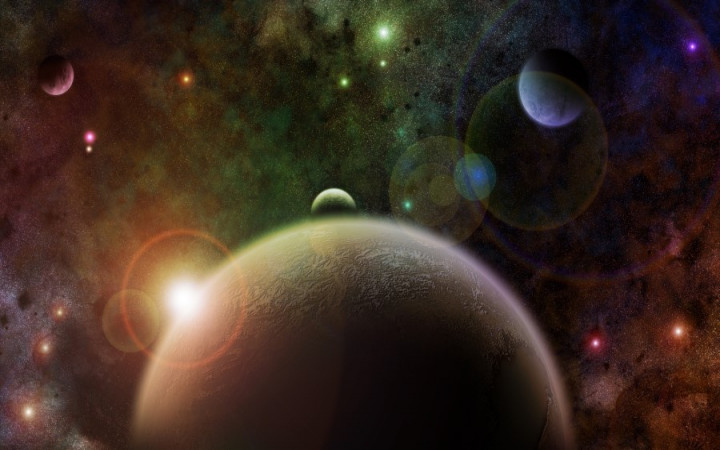What goes through your mind when you gaze up at the night sky? Do you see all those twinkling lights and WONDER what they are? You probably already know that many of them are other stars and planets.
If you've ever driven a long way for a vacation, you might have an idea of how large Earth is. You could walk from place to place for the rest of your life and still never see even the tiniest portion of the entire Earth.
When you look up into space, it's hard to imagine such a big Earth being such a tiny, insignificant speck compared to the entirety of the universe. The sheer scale of the universe is mind-blowing.
The origins of our universe have interested scientists for hundreds of years. There's probably a part of everyone that wants to know what else — and maybe who else — is out there. Some people even yearn to travel all the way to the edge of the universe, just to see what it's like.
Astronomers and astrophysicists use all sorts of modern technology, including telescopes, supercomputers, advanced mathematics, and radiation detectors, to study the universe. These tools have allowed them to see galaxies billions of light-years away.
Are these far-flung galaxies at the edge of the universe? No! Scientists know that the size of the universe depends upon its shape and how quickly it expands. Since they only have theories about these factors, scientists cannot really measure how big the universe is.
Most astronomers estimate the age of the universe is about 13.8 billion years old. They estimate the universe's age by measuring distances and the time it takes light from the farthest galaxies to reach Earth.
Based upon these findings, astronomers believe that, from Earth, they can use their modern technologies to look approximately 13.8 billion light-years in every direction. That puts Earth in the center of an observable sphere with a radius of 13.8 billion light-years. In other words, the part of the universe we can observe from Earth is a sphere almost 28 billion light-years across.
But is that the entire universe? No! It's much, much bigger. The farthest visible galaxy has changed greatly in the time it takes its light to reach Earth. Since the universe has continued to expand since its beginning, a galaxy 13.8 billion light-years from Earth at the birth of the universe would be approximately 46 billion light-years away now, which would mean that the universe would be at 92 billion light-years wide.
In reality, the universe is even bigger than that and continues to expand. Based upon data from modern probes and space telescopes, NASA scientists now believe that the universe has an essentially flat shape, meaning it's infinite in size since it's constantly expanding.
With an infinite universe, it would be impossible ever to reach its edge. As humans, we can only hope to continue to learn more about the universe as our abilities to see into the outer reaches of the universe expands with improvements in technology.
Traveling to the edge of the universe will continue to be possible only in science-fiction movies. The same goes for even traveling to the edge of the observable universe. To put things in perspective, imagine how long it would take to travel to the Moon. Manned Moon missions have taken about three days to get to the Moon, but the distance from Earth to the Moon is only 1.3 light-seconds. Now imagine how long it would take to travel 13.8 billion light-years!




